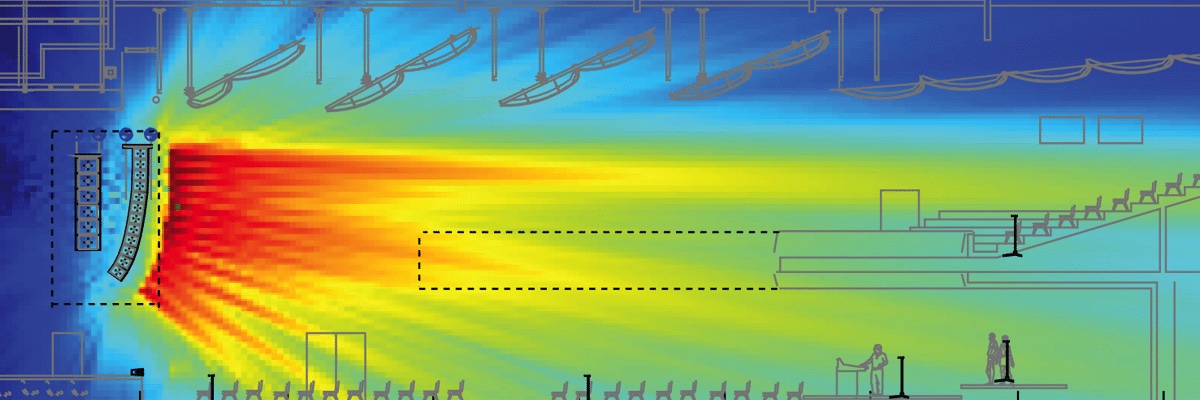


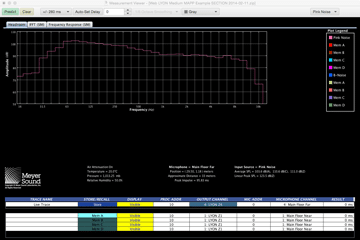
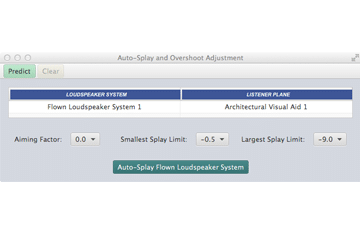
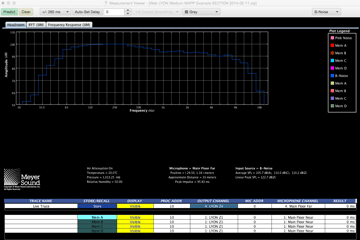
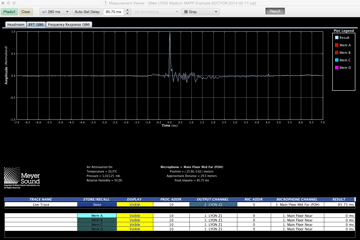
FEATURES
ENHANCEMENTS & FIXES
BUG FIXES
Fixed a bug that prevented MTF Pull Back frames being available after inserted or modified elements are placed in Flown Loudspeaker Systems.
KNOWN ISSUES
MAPP XT for MacOS requires additional steps under Security and Privacy to open the app anyway to launch.
FEATURES
ENHANCEMENTS & FIXES
ENHANCEMENTS & FIXES
NEW FEATURES
Added support for MCP50 & MCP70-X40 Cluster Plate Rigging Accessories for ULTRA-X40/X42 in Horizontal Loudspeaker Systems.
ENHANCEMENTS & FIXES
NEW FEATURES
View Menu now has user control for the opacity of imported geometry.
ENHANCEMENTS & FIXES
NEW FEATURES
ULTRA-X42 individual loudspeaker
ENHANCEMENTS
NEW FEATURES
ULTRA-X40, UPQ-D1, UPQ-D2, and UPQ-D3 individual loudspeakers
ENHANCEMENTS
NEW FEATURES
Delay integration for UP-4slim, Ashby, bug fixes and other user interface improvements all across the app including improvements to EPS export.
SOUND FIELD FEATURES AND ENHANCEMENTS
Edit & Context Menu
Insert Individual Loudspeaker Window
Insert Ground Stacked Loudspeaker System Window
NEW FEATURES
MAPP XT now includes the UP-4slim, Amie, bug fixes and user interface improvements all across the app including Sound Field preferences, Low Mid Beam Control, and Exporting Vector Graphics.
SOUND FIELD FEATURES AND ENHANCEMENTS
MEASUREMENT VIEWER FEATURES AND ENHANCEMENTS
NEW FEATURES
MAPP XT now uses the latest Java technology to support higher resolution retina displays. GALAXY output processing is now available from the list of processors with the latest features including Delay Integration, All Pass Filters, and Low Mid Beam Control.
SOUND FIELD FEATURES AND ENHANCEMENTS
Tips for using Low Mid Beam Control:
Low Mid Beam Control Settings:
MEASUREMENT VIEWER FEATURES AND ENHANCEMENTS
All tabs have been updated to improve the overall visual experience when using MAPP XT on high resolution and retina displays. Other enhancements include a color chooser for the data tracker, IFFT and Headroom plot legend location preferences, Headroom help and chart style preferences, Vector and Formatted Vector export options, and additional background color options.Ashby 5C and 8C Loudspeakers have been added to the list of Individual Loudspeaker Systems. For this version of MAPP XT, The Factor of Safety for LEO Family Products has been updated to support Pullback Frame Options. Selecting the appropriate PBF can be accessed from the drop down menu for the bottom element of any Flown Loudspeaker System using single or mixed arrays of LEO Family products. Updated rated load capacities of the Meyer Sound rigging assembly for different splay angle settings when using the Pullback Frame options provided are based on testing performed by an independent testing agency, and on 5 to 1 safety limit analysis to ultimate load performed by an independent structural engineering firm. The ratings apply to the Meyer Sound rigging only. You are responsible for the safety factor required by local law for your installation, and for determining the adequacy of supporting structure “above the hook.” PERMANENT INSTALLATIONS MUST BE CERTIFIED BY THE ENGINEER OF RECORD FOR WIND AND SEISMIC LOADING. For more information, please contact Meyer Sound Technical Support.
LINA and 750-LFC have been added to the list of Flown Loudspeaker Systems. For this version of MAPP XT, The Factor of Safety for LEO Family Products has been updated to exclusively support a single rating. Rated load capacities of the Meyer Sound rigging assembly for different splay angle settings are based on testing performed by an independent testing agency, and on 5 to 1 safety limit analysis to ultimate load performed by an independent structural engineering firm. The ratings apply to the Meyer Sound rigging only. You are responsible for the safety factor required by local law for your installation, and for determining the adequacy of supporting structure “above the hook.” PERMANENT INSTALLATIONS MUST BE CERTIFIED BY THE ENGINEER OF RECORD FOR WIND AND SEISMIC LOADING. Additional products supported in the list of individual loudspeakers include the VLFC and Amie-Sub. Improvements to Auto-Splay include the ability to automatically splay mixed arrays of LEO with LYON and LYON with LEOPARD. For more information, please contact Meyer Sound Technical Support.
The LYON-WXT has been added to the list of Flown Loudspeaker Systems. Up to two LYON-WXT can be selected beneath a LYON-W.Meyer Sound’s LYON-WXT extends the vertical coverage of the LYON-W line array loudspeaker for use as downfill at the bottom of LYON or LEO-M+LYON arrays. LYON-WXT has the same horizontal dispersion and acoustical properties as a standard LYON-W but has greater vertical dispersion, so fewer elements are needed to achieve wider vertical coverage in large, multi-level venues. Available splay angles for LYON-WXT are 8–15 degrees (compared to 0–9 degrees for LYON-W), allowing LYON-WXT to cover nearly twice the vertical area as LYON-W. LYON-WXT is particularly effective when used for downfill at the bottom of extremely curved arrays, such as those used near or directly above the stage for in-the-round arena coverage. LYON-WXT can also be used for installations that cannot use frontfill loudspeakers. LYON-WXT integrates cleanly into LYON arrays without transition hardware. LYON-WXT is available as a factory installed option or as a field upgrade for existing LYON-W loudspeakers.
When comparing product capabilities (including SPL and headroom) in MAPP XT, one must consider how loudspeaker arrays work when the individual elements are combined into a system. Before LEOPARD’s development Meyer Sound line array elements would individually exhibit an equal magnitude response with pink noise as the stimulus. With LEOPARD, a new paradigm has begun where the complementary array EQ is applied inside the loudspeaker. To compare SPL accurately, Meyer Sound created “Array EQ” Loudspeaker Types in MAPP XT. These specific array EQ products were added to the available product options for specific Flown Loudspeaker Systems:
This release of MAPP XT includes Rigging Factor of Safety for LEOPARD Family Products, Gradient Subwoofer Array support for 900-LFC, and transition frame support for LEOPARD. Pink and B-Noise data has been added for the following loudspeakers: UPA-1P, MM-10AC, 600-HP, UMS-1P, and USW-1P.
HIGHLIGHTS OF OTHER NEW FEATURES AND FIXES IN MAPP XT
NEW FEATURES
ENHANCEMENTS